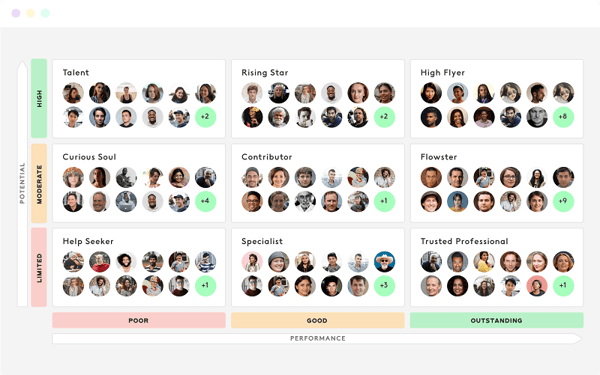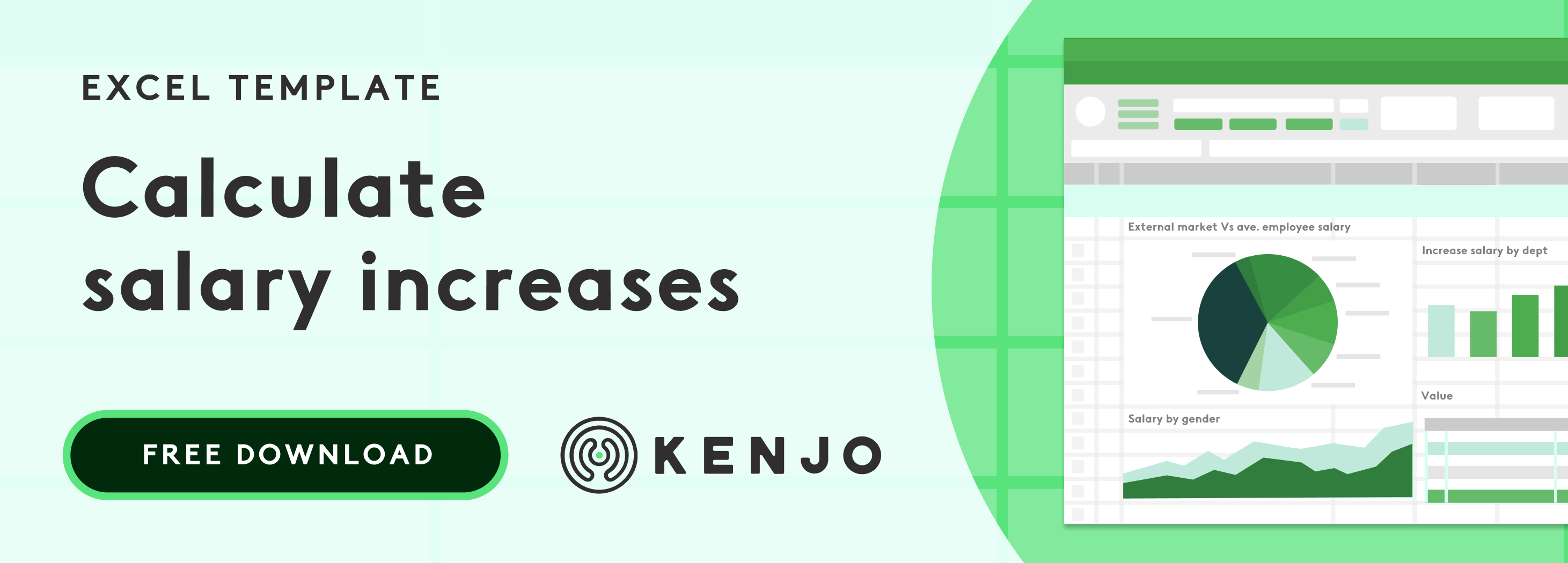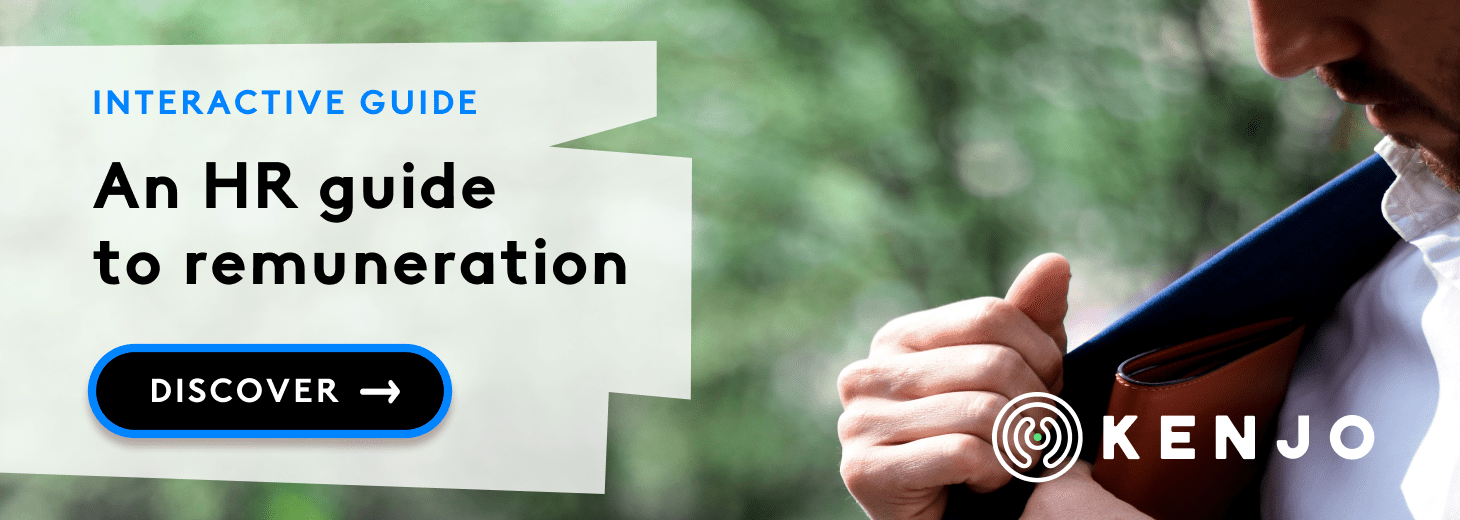How to create a compelling Employee Value Proposition (EVP)
-1.jpeg)
A step-by-step roadmap to codify the unique value you offer your people.
This month, we’ve been talking a lot about compensation. But in today’s landscape, financial compensation is far from the only element employees care about.
That’s where your employee value proposition – EVP – comes in. (It’s also sometimes called an employer value proposition, but the principle’s the same.)
Keep reading, to explore why an EVP matters, and a step-by-step roadmap to building one that does your business justice.
What is an EVP – and why do you need one?
Harvard Business School defines a unique value proposition – a critical business tool you’re likely familiar with – like this:
“A value proposition defines the kind of value a company will create for its customers.”
The same’s true of an EVP, but for your employees instead of your customers. That is, an employee value proposition defines the kind of value your company will create for employees.
“The ‘employee value proposition’ describes what an organisation stands for, requires and offers as an employer. The psychological contract between employers and workers addresses and sets expectations, beliefs and obligations of the employment relationship.”
In other words, your EVP is the reason your people choose you. It codifies the value you offer talent – not just in terms of salary (although a competitive salary can be part of your EVP) but in holistic terms.
What will your employees gain throughout their career, by working with you?
A great EVP doesn’t just regurgitate stale phrases like “great benefits package”. It captures your organisation’s unique spirit and culture – it’s a mission statement that articulates your employer brand.
An EVP is important because it guides your recruitment and HR team, motivates, engages and retains your existing employees, and attracts top talent.
Just look at these Gartner stats, if you need more persuading.
An attractive EVP…
- …reduces the compensation premium needed to hire by 50%
- …reaches 50% deeper into passive labour markets
- …decreases annual employee turnover by 69%
- …increases new hire commitment by 29%
While a bad EVP actively pushes people away. Gartner says 65% of candidates have discontinued a hiring process thanks to an unattractive EVP.
So let’s dig into building one.
How to build an EVP – a roadmap
Let’s go back to Harvard Business School’s definition of a unique value proposition. They outline three elements that are important:
- Which customers do you serve?
- Which needs do you meet?
- What price provides value for customers and profitability for you?
The first two are the fundamental elements of building an EVP: which employees do you hire, and which needs do you meet (and how)?
(And the third is about defining the right remuneration model – here’s a guide to setting salaries for your employees.)
Let’s bring Gartner into the mix too. Gartner say an effective employee value proposition must tick four boxes:
- It must be appealing. That is, it aligns to employees’ needs and wants.
- It must be authentic. That is, it genuinely aligns to your strengths.
- It must be relevant. That is, it must fit with your strategy.
- It must be different. That is, it must set you apart from competitors.
So – those are the major elements of building a great EVP. Here’s how to get started.
1. Define who you hire
In marketing, you’d call this stage building customer avatars. The same’s true for employees. In other words, what’s the profile of the people we hire? Who excels here? What do your top performers look like? Do any particular characteristics unite your best people?
You can get that info from several sources:
- Interviews with line managers. Ask: who excels in your team and why? In the past, who hasn’t and why?
- Interviews with top performers. Ask: what are your dominant strengths? Why do you think you’ve succeeded here?
- Interviews with senior leaders. Ask: what do you see as our core values? What values do the senior leadership team embody?
- Analysis of performance reviews. Ask: what skills do we target, recognise and reward? What skills are most strategically important for the organisation? If you use competency matrices, they’ll be invaluable here.
This step helps you understand who your potential employees are – and who they aren’t. It’s a vital step to learning how to position your employee value proposition.
For instance, say you predominantly hire tech graduates from top universities. That talent segment will have different priorities to, say, working parents with 5 years’ experience. Knowing which audiences you prioritise helps you prioritise your message.
Next…
2. Understand their perspectives
The best employee value propositions don’t only list things you think about yourself. Rather, they shine a light on what your people think about you. That is, they’re authentic because they’re tethered to employees’ real experiences of you as an employer.
As Jeff Bezos (apparently) said: “Your brand is what people say about you when you're not in the room”. That’s true of personal brand, business brand and employer brand.
Here’s how to find that out.
- Employee focus groups. Ask: what do you love most about working here? How would you describe our culture? Why have you stayed?
- Exit interviews. Ask: why are you leaving? How would you describe our culture? What’s been the best and worst thing about working here?
- Candidate feedback. Ask: why did you apply to work with us? What’s your impression of our culture? What’s most important to you about a new role?
Now you have a series of (hopefully fairly cohesive) themes, based on what your people really think about you. Consider them hypotheses – and now, an employee pulse survey is a fantastic way to test them at scale.
Put together a pulse survey that collates themes into employee experience statements. Like, “I have the right tools and technology to do my job well”, “I feel senior leaders’ doors are always open”, and “My colleagues are very ambitious”.
Then issue a survey across the workforce, asking employees whether they strongly agree, agree, disagree, or strongly disagree with each.
This helps you understand trends. Statements your employees mostly ‘strongly agree’ with are the main components of your EVP. Statements where employees’ opinions are split could indicate you need to take further action, if you want to include them in your value proposition.
For example, let’s say your employee focus groups highlighted great career progression for mid-managers – but in your pulse survey, 40% of people didn’t agree. That suggests you’re doing career progression right sometimes but not always – so career progression is a major area to strengthen, if you think it’s a major component of your EVP.

Kenjo Interface
3. Write your EVP
You’ve got all the raw ingredients of your EVP. Now’s the time to pull those strands together into a written statement. At this point, this should feel easy. (Yes, even if you’re not a writer!). It’ll almost write itself, because you’ve built a robust foundation already.
EVPs vary in length and format. Yours might be 500-words or it might be 1500-words. It might be a series of prioritised bullet points or it might be a more cohesive narrative. It might even be a video.
Whatever it looks like, you’ll end up with an internal-facing piece of content that informs how you talk about your company (either aloud, like in interviews, or written down, like on your website).
Cisco’s ‘Our People Deal’ manifesto is a great example of an EVP put into action. Given 98% of Cisco employees say it’s a great place to work and they’ve won endless workplace awards and accolades, they’re obviously doing something right.
4. Get feedback and tweak
Hopefully we’ve made one thing abundantly clear: your EVP shouldn’t happen in a vacuum. It’s not an “initiative”. It’s collaborative. So now’s the time to go back to everyone you’ve involved in the process so far – which, hopefully, is everyone – and circulate for their thoughts.
It’s important to invest the time to get this right.
Changing your business value proposition too often weakens your brand, confuses people internally and loses trust amongst consumers. The same’s true of your employee value proposition. Your EVP may flex over time but it’s best fixed for a good few years.
That way, your people can connect and internalise – and you can start to reap the rewards of having a considered, concrete EVP.
Your employee value proposition captures your unique culture, spirit and brand as an employer.
It tells candidates what to expect – and why to choose you, not your competitors (even if your competitors offer more money). It tells employees about the community they’re part of, and why they should hang around.
And it acts as a north star for senior people leaders, making coherent decisions that cement your culture rather than weaken it. So if you don’t already have an EVP, now’s the time to build it.
Guess what? Kenjo’s all-in-one HR software makes HR admin effortless – so you’ve got more hours in the day to invest into valuable tasks like building your employee value proposition. Learn more right here.


